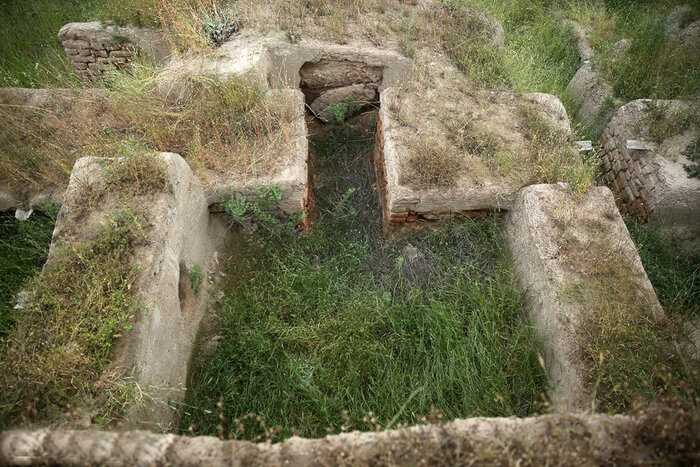Experts busy demarcating great defensive wall as a prerequisite for UNESCO status

TEHRAN – A team of archaeologists, topographers, and cultural heritage experts are completing a project to define legal boundaries for the ruins of the Great Wall of Gorgan, which was once one of the longest brick barriers of the ancient world.
Stretched across Iran’s northern Golestan province, the defensive wall is about 200 km in length and it was built to prevent the invasion of the northern tribes. It is said to be the longest architectural work of ancient Iran, which was built in 90 years.
“Currently, a panel of experts is analyzing related documents and images taken from the defense wall of Gorgan in order to determine its boundaries as a prerequisite for the [possible] inscription of the wall on the UNESCO World Heritage list,” IRNA quoted provincial tourism chief Ahmad Tajari as saying on Sunday.
Deputy cultural heritage minister Mohammad-Hassan Talebian has said the process of registering the wall on the UNESCO list would be pursued when the mapping project gets complete.
Also known as Red Wall, which in some ancient texts is referred to as the Red Snake, this wall is the longest brick ancient barrier between Central Europe and China, longer than Hadrian’s Wall and the Antonine Wall put together and the third-largest wall in the world after the walls of China and Germany.
Archaeological excavations have so far identified ditches, brick kilns, earthen dams, water canals, 38 forts, and watchtowers attached to the wall, and more than 25 castles in the southern margin of the wall as well as several ancient sites from prehistoric, historic, and Islamic eras.
The gigantic barrier is also more than three times the length of the longest late Roman defensive wall built from scratch, the Anastasian Wall west of Constantinople. The combined area of the forts on the Gorgan Wall exceeds that of those on Hadrian’s Wall about threefold.
Justification of outstanding universal value
According to UNESCO, the Gorgan plain with its defensive monuments of the Sassanid era (5th-7th centuries) constitutes the greatest cluster of military monuments known from anywhere within the Sassanid Empire, contemporary to a large-scale urban foundation, provides a microcosm of one of the ancient world’s largest states. Thus, due to its interaction with civilizations and cultures and its strategic location, carries important contents from the past.

Experts say the Great Wall of Gorgan is the longest fort-lined ancient barrier between Central Europe and China, it is longer than Hadrian’s Wall and the Antonine Wall put together. It is also more than three times the length of the longest late Roman defensive wall. The Great Wall of Gorgan posed exceptional engineering challenges. There was no stone or timber in the steppe; it is just made of bricks. The system of it is remarkable in terms of its physical scale and its technical sophistication. The Great Wall of Gorgon is an incredible and sophisticated defensive construction located in north-eastern Iran; it has around 30 military forts, an aqueduct, and water channels that go along the route. It is commonly known as “the Red Snake” because of the construction materials used, red-colored bricks.
Moreover, the route of the Gorgan Wall and the associated canal had to follow a natural gradient, evidence for remarkable skills in hydraulic engineering by its creators. The Gorgan Wall and its associated ancient military monuments provide a unique testimony to the engineering skills and military organization of the Sassanian Empire. They help to explain its geographic extent, from Mesopotamia to the west of the Indian Subcontinent, and how effective border defense contributed to the Empire’s prosperity in the interior and its longevity.
Evidence suggests this decisive period of history saw the demise of the Western Roman Empire and the eventual emergence of the Caliphate, expanding at the expense of the Sassanid and Eastern Roman Empires. The Sassanid military barriers and fortifications in the Gorgan Plain provide evidence of how effective defense, or the lack of it, could contribute to the security and prosperity of empires.
AFM

Leave a Comment